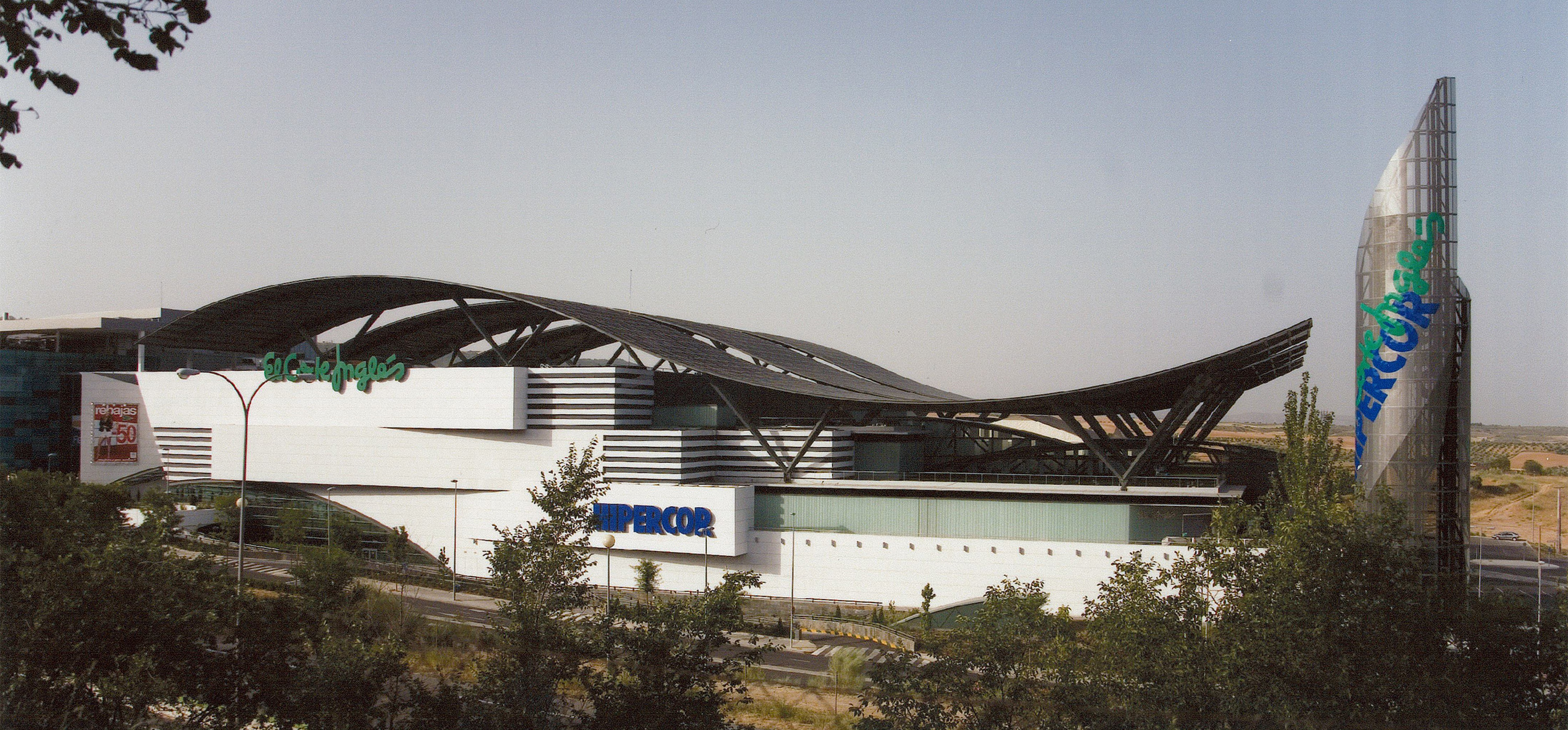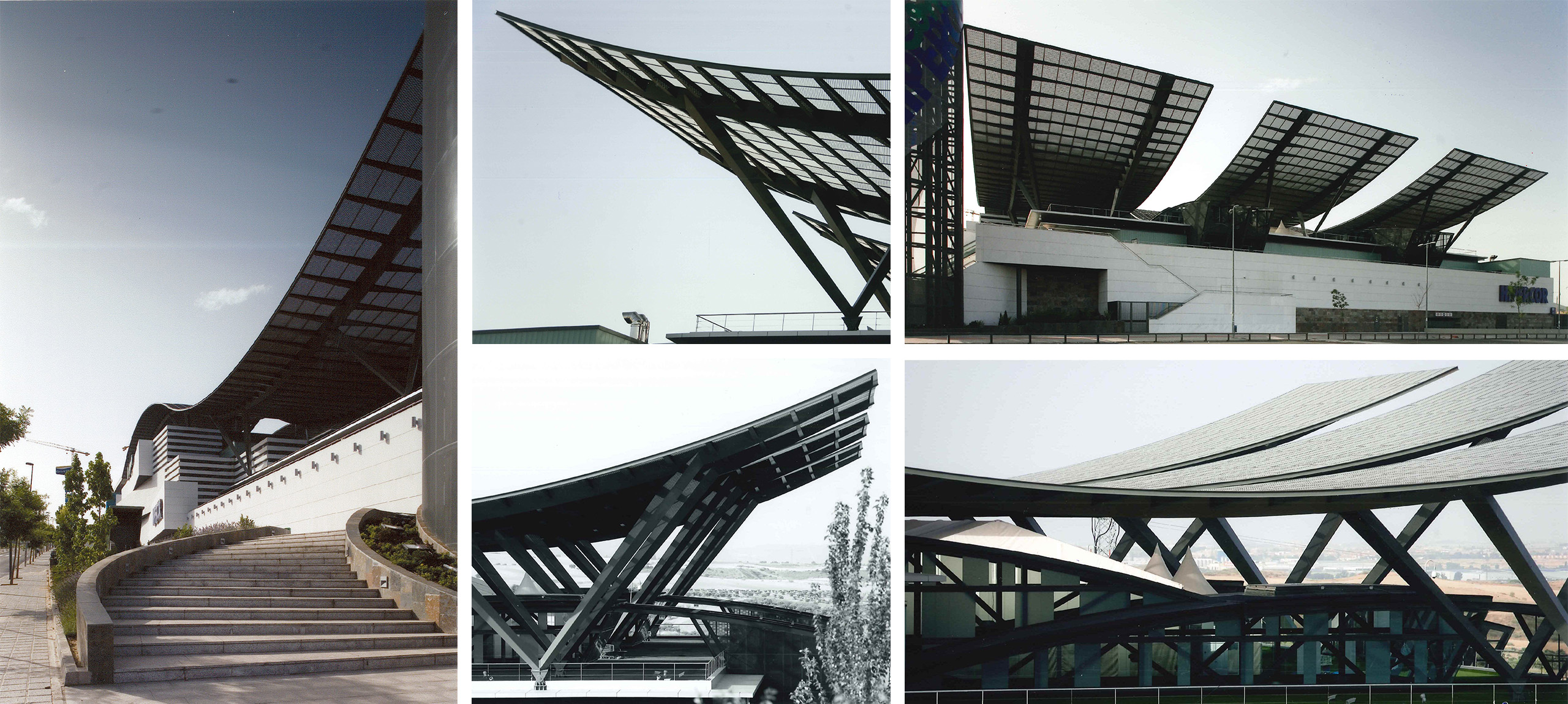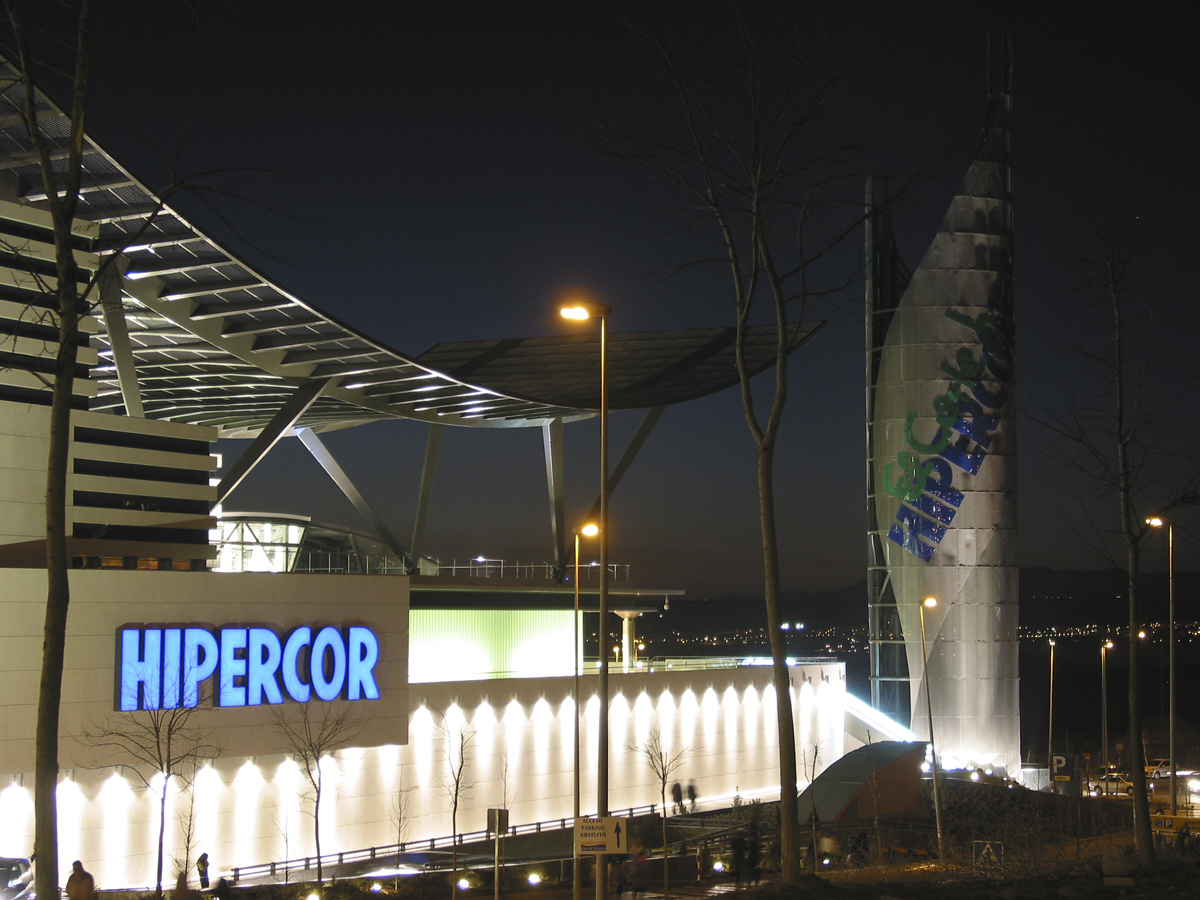
| Hipercor Shopping Center | |
| Guadalajara, España | |
| Structural typology | Roof Structures |
| Date | Januar, 2008 |
| Umfang | Detailed design and construction support |
| Architect | Antonio Viton (El Corte Ingles) |
| Owner | El Corte Inglés |
The existence of a longitudinal wave shape suggests the existence of two elements: an arch coinciding with the positive curvature area (upwards) and a hanging element (tie) in the negative curvature area (downwards). The sequence of these two elements, if their extremes are sufficiently anchored horizontally, would allow the construction of an exceptionally light structure, working longitudinally by form and, therefore, with small bending moments and minimum depth.
However, the location of the supports of both sections on different levels and the presence of the supports at intermediate points instead of at the extremes of the "arch" and the "cable", slightly modify this initial idea which has to be adapted to the geometry of the project and to the extended situation of the building below the roof.
In order to solve this problem, the following elements and solutions have to be included:
- To introduce cables which anchor the two springs of the arch between one another in order to avoid the horizontal reactions on different levels which harm the concrete structure.
- To introduce an anchored stanchion in the exterior area of the tension area to anchor this force.
In this way, it is basically possible to obtain a structural arch and cable type behavior and to practically eliminate the corresponding moments of longitudinal forces.
TEXTILE MEMBRANE SOLUTION
However, the location of the supports of both sections on different levels and the presence of the supports at intermediate points instead of at the extremes of the "arch" and the "cable", slightly modify this initial idea which has to be adapted to the geometry of the project and to the extended situation of the building below the roof.
In order to solve this problem, the following elements and solutions have to be included:
- To introduce cables which anchor the two springs of the arch between one another in order to avoid the horizontal reactions on different levels which harm the concrete structure.
- To introduce an anchored stanchion in the exterior area of the tension area to anchor this force.
In this way, it is basically possible to obtain a structural arch and cable type behavior and to practically eliminate the corresponding moments of longitudinal forces.
TEXTILE MEMBRANE SOLUTION







